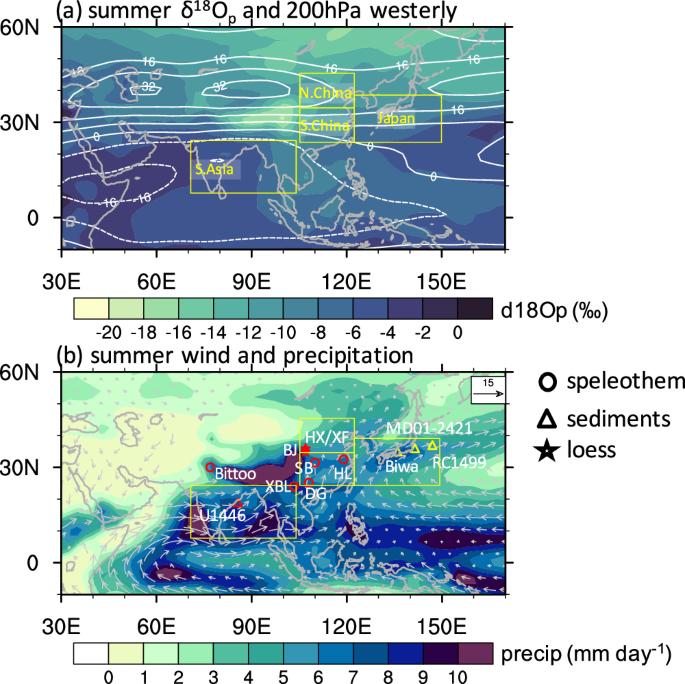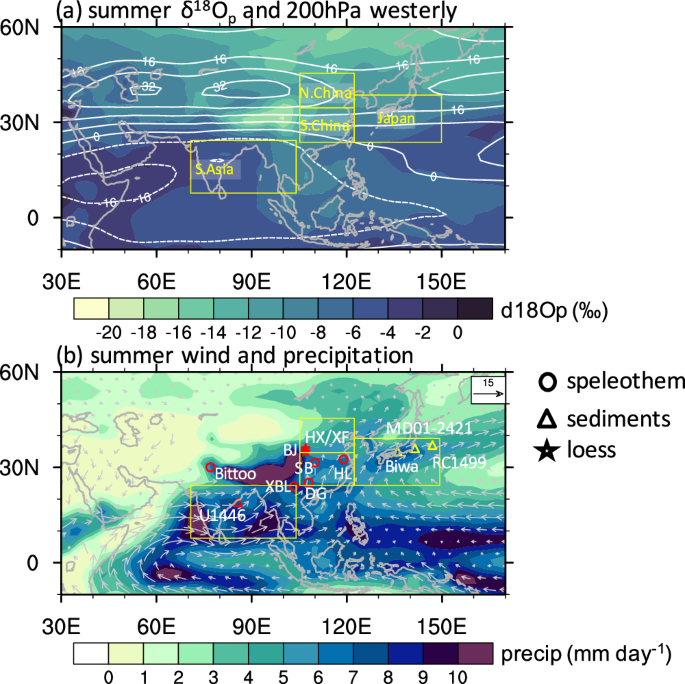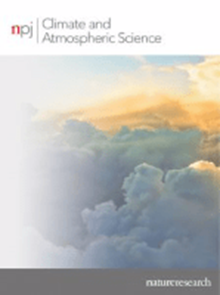Grand dipole response of Asian summer monsoon to orbital forcing
IF 8.5
1区 地球科学
Q1 METEOROLOGY & ATMOSPHERIC SCIENCES
引用次数: 0
Abstract
The coherent continental-wide speleothem water isotope records are accompanied by regionally inconsistent moisture patterns within the Asian summer monsoon (ASM) region, leaving a disputed explanation of monsoonal hydroclimate variability at the orbital timescale. Here, the transient simulation forced by orbital parameters during the past 300,000 years in an isotope-enabled fully coupled model shows that the complex ASM response can be understood as a grand dipole pattern of oxygen isotope and rainfall between South Asia and Japan, with South China lying in a hybrid transition region. While the dipole monsoon rainfall change between South Asia and Japan is related to the large-scale circulation adjustment in response to Northern Hemisphere summer insolation, the dipole oxygen isotope pattern is associated with the changing contribution of moisture sources. Our results provide new clues to reconcile ASM hydroclimate patterns at orbital timescale as revealed by the water isotope records and other hydrological proxies.


亚洲夏季季风对轨道强迫的大偶极响应
在亚洲夏季季风(ASM)区域内,全大陆范围一致的岩浆水同位素记录伴随着区域性不一致的湿度模式,这使得在轨道时间尺度上对季风水文气候变异性的解释存在争议。在此,通过在一个同位素全耦合模式中对过去 30 万年的轨道参数进行瞬态模拟,发现复杂的亚洲夏季季风响应可以理解为南亚和日本之间氧同位素和降雨量的大偶极模式,而华南则处于混合过渡区。南亚和日本之间季风降雨量的偶极变化与大尺度环流调整对北半球夏季日照的响应有关,而氧同位素的偶极模式则与水汽源的贡献变化有关。我们的研究结果为协调水同位素记录和其他水文代用指标所揭示的轨道时间尺度上的 ASM 水文气候模式提供了新的线索。
本文章由计算机程序翻译,如有差异,请以英文原文为准。
求助全文
约1分钟内获得全文
求助全文
来源期刊

npj Climate and Atmospheric Science
Earth and Planetary Sciences-Atmospheric Science
CiteScore
8.80
自引率
3.30%
发文量
87
审稿时长
21 weeks
期刊介绍:
npj Climate and Atmospheric Science is an open-access journal encompassing the relevant physical, chemical, and biological aspects of atmospheric and climate science. The journal places particular emphasis on regional studies that unveil new insights into specific localities, including examinations of local atmospheric composition, such as aerosols.
The range of topics covered by the journal includes climate dynamics, climate variability, weather and climate prediction, climate change, ocean dynamics, weather extremes, air pollution, atmospheric chemistry (including aerosols), the hydrological cycle, and atmosphere–ocean and atmosphere–land interactions. The journal welcomes studies employing a diverse array of methods, including numerical and statistical modeling, the development and application of in situ observational techniques, remote sensing, and the development or evaluation of new reanalyses.
 求助内容:
求助内容: 应助结果提醒方式:
应助结果提醒方式:


